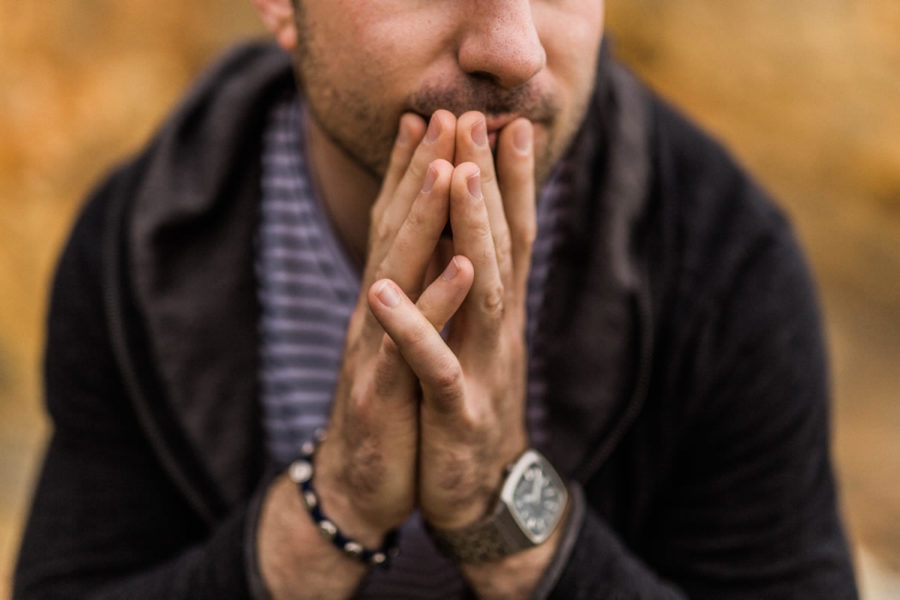
Whether you agree with euthanasia or not, I suspect it will eventually become legal in most states. After all, one could say our death is the only “significant” day we don’t plan. Add in our love of control and well…
In the Aeon article below, Daniel Callcut points out an aspect of euthanasia I had not considered: it differs from suicide in that it is not performed by the person but for the person.
Callcut also brings up another angle: will you be able to afford the choice?
DEATH BY DESIGN
Aeon Article, by Daniel Callcut
One day you wake early, walk into town, and a large advertising billboard attracts your attention. The image on the poster is mysterious but appears to depict a ceremony in a forest. You didn’t choose to come into this world, says the text across the middle, but you can choose how you leave. To the bottom right of the poster is a company name, Designer Endings, and contact details. You call the number and confirm that what is being offered is indeed the chance to die in just the way you would like.
The description is fiction – there aren’t currently any designer euthanasia organisations or companies – but it’s worth wondering why it isn’t yet fact. Many people no longer hold the kind of religious views according to which our time of death is not allowed to be of our choosing. There are an increasing number of countries where physician-assisted suicide and euthanasia is permitted in a medical context. But why think that the right to choose our ending is given legitimacy only, if at all, on health grounds? Why don’t we have the right to end our lives not just when we want to but to also do so in style?
The word ‘euthanasia’ comes from the Greek for a ‘good death’. However, this idea of a positively good death can easily be lost in contemporary debates over euthanasia where the emphasis is typically on the rights of a person in very dire health. I will touch on the familiar questions of medical ethics in what follows. But my larger goal is to liberate discussion of the right to die from the medical settings in which it is now most familiar. To do so allows us to think about euthanasia – a good death – in less bleak circumstances.
We don’t ever, strictly speaking, get to experience death, as death is the end of experience. As the Austrian philosopher Ludwig Wittgenstein wrote, death is not an event in life. But there’s no reason why death couldn’t be an event in the sense that a wedding is an event. You could decide the date and make extensive arrangements for the location and the nature of the ceremony. You could draw up a guest list. You might plan for friends to read farewells and lines of verse. You could give a speech of your own or, for the karaoke-inclined, sing ‘My Way’.
You might not have many family or friends – or not want them there in any case. No doubt a company such as my fictitious ‘Designer Endings’ could provide staff for the ceremony you have in mind. This could cause controversy: no doubt some people’s visions for their death ceremony would be bacchanalian and orgiastic. You can imagine the many corny ideas about how to go not with a whimper but with a bang. People might look for inspiration from pagan festivals such as Burning Man in Nevada. Others would no doubt look to film and literature in designing the stage for their exit. Tastes, especially once allowed to flourish, would vary: we differ in how we want to leave as much as in how we want to live. Some want the intensity of chemsex, others want the calm of a cup of tea. The very wealthy might try to hire singers such as Lana Del Rey for their goodbye ceremony. Others might opt for a death metal band.
(…)
Consider all the ways that a person’s death has been marked by cultures around the world and throughout history. There’s no reason to think that people’s euthanasia plans might not be just as inventive. The sky’s not the limit.
Traditional arguments for assisted suicide and euthanasia appeal to compassion and individual liberty. Think, first, of the case for compassion. Sometimes ‘death is a kindness’, as the gang-leader-turned MP Tommy Shelby says in the BBC drama Peaky Blinders (2013-). Consider how we treat other animals. Why insist that humans must go on suffering – after they have made clear that they don’t want to – when we would relieve a dog or a horse? So empathy and compassion could lead you to defend the right to assisted suicide and euthanasia. And it could lead you to defend the right to choose the setting for one’s end. If a human being is helped to die, then there is no reason why the end must always be in a hospice or hospital even if, for practical reasons, this will be necessary sometimes.
The value of individual liberty also points in favour of the right to end one’s life. The most central idea of liberal individualism is that your life is your own and that you have the right to live it as you see fit – you decide your job, your religion, whether you want your hair blue, and so on. This individualistic ideal, perhaps most impressively articulated by the English social liberal John Stuart Mill in his essay On Liberty (1859), has clearly had an enormous influence on many contemporary societies. And it’s surely in keeping with the spirit of this compelling ideal that the right to lead your life as you wish includes the right to end it when you wish. That is to say: you have a right to die.
Mill thought that individual liberty had to include the right to do as one likes with one’s own self – even harming it (whether intentionally or not) through drinking, gambling and so on. That, for Mill, is just what it means to be a free person. So it’s hard to see how a liberal can oppose the right to take one’s life given that such a right is perhaps the ultimate expression of one’s unique rights vis-à-vis one’s self. This is true even if one acknowledges that the claims of individual freedom always have to be balanced with other claims. Mill, for example, qualified his position to allow that society might be justified in intervening in self-harming cases when a person has dependents (such as children). And a plausible position on the right to die will allow for carefully considered social interventions in the case of suicidal mental illness.
Mill argued that a free person had the right to do as he likes so long as he doesn’t harm other people. But surely, one might object, Mill’s ‘harm principle’ must outlaw euthanasia, for death is a harm. Doctors who oppose euthanasia, after all, often do so precisely on the basis that the Hippocratic oath requires that they do no harm. Indeed, some draw an ethical line between the permissibility of assisted suicide and that of euthanasia, for this reason. When it comes to assisted suicide, even if a person is helped to take his life, the final action (e.g., swallowing pills) is his own. Assisted suicide remains, ultimately, suicide. And Mill’s ‘harm principle’ allows you to harm yourself. But, in euthanasia, the action that takes someone’s life (e.g., a lethal injection) is not performed by the patient but for him. Euthanasia is ultimately an act of killing, even if performed in accordance with the dying person’s wishes.
It might be argued in response that, even if euthanasia involves killing, death isn’t always a harm. Perhaps to be alive in some situations is a fate worse than death, and death in such circumstances would be a benefit. Some might argue that allowing assisted suicide and yet not allowing euthanasia is unfair to those who are physically incapable of taking their own lives. Others might add that, in a free society, it should be left to individuals to decide what constitutes a harm or a benefit vis-à-vis their own lives. Finally – and this is perhaps the strongest rejoinder of all – it could be argued that the standard that matters in liberal societies is not harm but adult consent. If two or more adults are respecting each other’s freely given consent, then they should be able to do as they like.
Many of us already live in societies that allow consenting adults to harm one another: think about boxing, for example, and forms of BDSM sex that involve consensual injury. Consider, more mundanely, the sale and consumption of those sugary drinks we all know are harmful to health. It’s your life, as we say, it’s up to you. If, to adapt Cole Porter, anything (consensually) goes, then it’s hard to see why individuals shouldn’t have the ability to form agreements with companies such as Designer Endings. Governments shouldn’t, as the US libertarian philosopher Robert Nozick wrote in Anarchy, State, and Utopia (1974), ‘forbid capitalist acts between consenting adults’.
The idea of designer euthanasia naturally flows out of what many consider a positive development in the modern world – the enormous value placed upon free choice and the voluntary. The ideal of individual freedom has already overturned many social and sexual taboos: why not death? And if the worry is that legalising designer euthanasia would send everyone rushing to arrange their death, then I think we should worry about why we have this worry. Have we made life on Earth so dire that death presents a welcome alternative? Do we have to keep all appealing escape routes unavailable? The upshot of anxiety about the idea of Designer Endings should be to take greater responsibility for the social world that we have created. It’s undesirable, in a free society, to make people prisoners of existence.
But is the way forward to turn death into a marketplace? Many of us already live in business-obsessed cultures that threaten to turn life into one long sales pitch. Capitalism, as Marxists have long observed, grows in part by colonising aspects of life once thought too precious to be framed as a business opportunity. These business opportunities are often celebrated as new freedoms – as when a religious day of rest is opened up for shopping – but can be met with a sad sense that life has become entirely owned by commercial activity. Thus, the idea that people should design their death in coordination with euthanasia businesses perhaps sounds like one more dystopian capitalist possibility of the near-future. The prospect might produce not just moral outrage but aesthetic horror – akin to hearing of proposals to beam advertising on to the Moon.
(…)
The point, ultimately, is to liberate discussion of euthanasia from its standard medical context, and to cultivate our sense of possibilities with regards to death. We can’t, for practical medical reasons, always take euthanasia away from doctors but it’s nonetheless worth thinking of how euthanasia might be liberated from medicine in the same way that, say, weddings have been liberated from religion. There is a wide and wild range of ways that we might want to have the freedom to die. Chosen death need not always be desperate or despairing or the best of one’s bad options.
Consider why a person might reasonably decide that now is the right time to die, and not for immediate medical reasons. Perhaps someone looks at the shape of her life and wants not to hang on, as it were, to the bitter end but thinks that this is a good time to go. She wants to die happily. Who is to say that this cannot be a shrewd assessment made with a clear-headed comprehension of the fact that we must all go at some time?
(…)
New freedoms and new abilities often generate new inequalities. Many will think that, if there is a right to die, then it is (…) a protected space for you to decide to end your life as you like without interference. Designer euthanasia, in such circumstances, could be legal – the question would then be, if you want it, can you afford it? Death, as the old saying goes, is the great leveller, and at least one of the insights packed into this expression is the thought that none of us gets to control when or how we die. But designer euthanasia would change this. The poor might continue to die painful, natural, unchosen deaths while the wealthy have grand farewell parties. This is not necessarily an argument against permitting chosen endings: after all, it’s also an argument for a fairer distribution of wealth. But it’s undoubtedly one of the potential consequences of legally allowing people to choose and control the time and manner of their death.
A free society ought to recognise one of the most basic freedoms of all: the freedom to die when one chooses. What I have argued is that the liberal grounds for permitting medical euthanasia are also grounds for permitting chosen death more broadly – i.e., not just for medical reasons, and not necessarily in a medical setting. We can think more expansively about what kinds of endings we might choose if given the social and political freedom to do so. There is room to be far more active and imaginative, and less passive and resigned, in relation to death. We have the ability to transform what might seem like fantasy into a live, practical question: if you could choose, what would make for a good death?
(…)






























